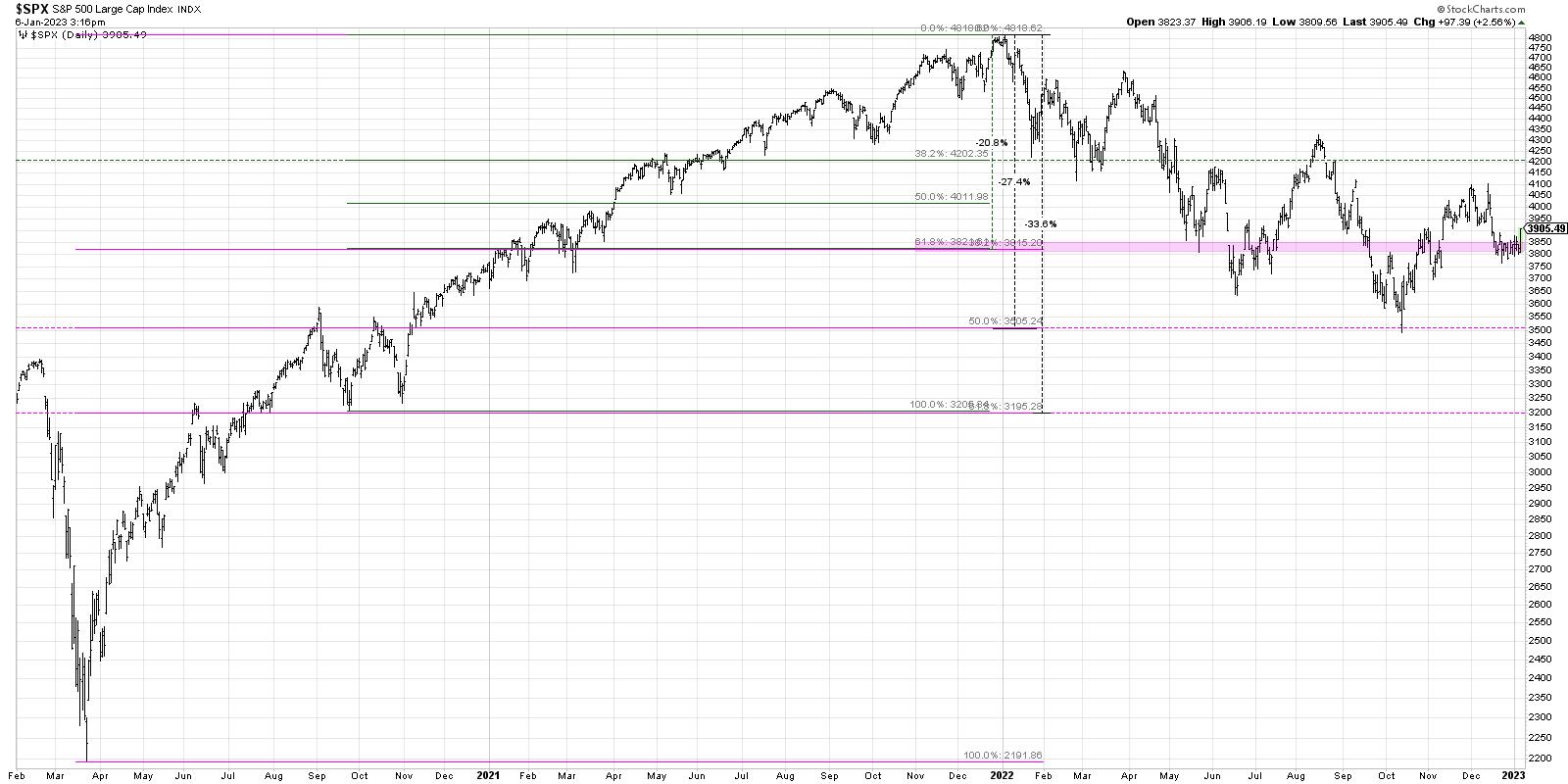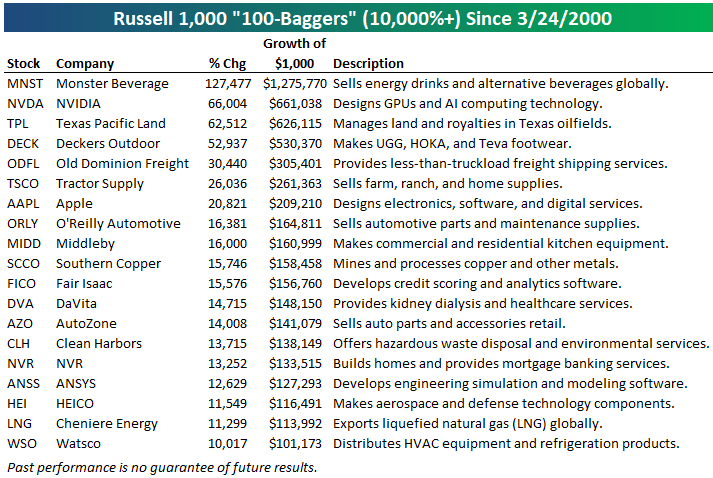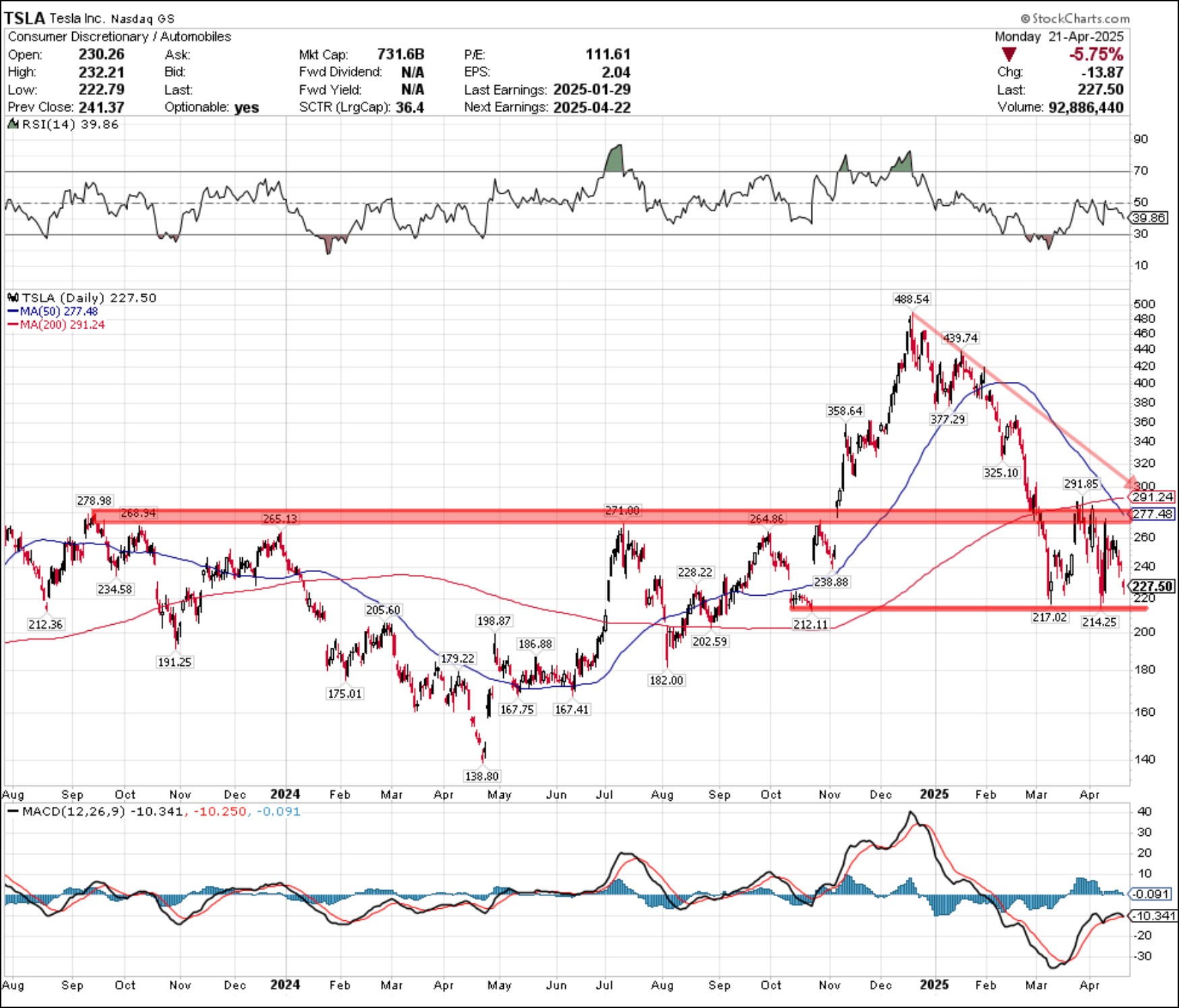As the major bear market of 2022 really got going, the 3800 level came into play as a likely support level for stocks. We keyed in at this level based on Fibonacci retracements using the March 2020 low and January 2022 high. At the time, this appeared to be an aggressive downside target and we instead focused on shorter-term targets using the September 2020 low (not as significant as the March 2020 low, but still a key consolidation point during 2020-2020). 2022 uptrend).
So now, in January 2023, we’re testing the 3800 level again. Friday’s price action seems to underscore the importance of this support level with an exclamation mark. How bearish can markets be if we stay above SPX 3800?
I would argue that we are now in a consolidation phase, although the main trend is still down. Here’s why.
Stage design with Fibonacci
If you look at the long-term chart of the S&P 500 index, you can see the major Fibonacci framework based on the March 2020 low (pink lines) as well as the secondary framework based on the September 2020 low (green lines).
3800 represents a drop of about 21% in absolute terms from the all-time high set in January 2022. The pink shaded area indicates the alignment of the two Fibonacci frameworks and shows why 3800 is indeed an important level to watch.
Quick question, what rate of return would it take to go from 3800 back to 4800 and erase that 21% loss? Answer: 27%!
If we take an even shorter-term framework and use the October 2022 low and December high, you’ll find that 3800 represents about a 50% retracement of this recent rally.

So, based on a number of different time frames, we see clear evidence that 3800 appears to be a turning point for the S&P 500.
Further evidence using price and momentum
While Fibonacci retracements certainly have some value on their own, any potential support or resistance level is further validated as price action shows the level’s importance. In other words, the more times you test a particular level, the more meaningful it becomes. The fact that the market has been essentially at this 3800 level since mid-December is arguably the most important argument for this level being valid.
Now let’s review the momentum properties using the RSI.

As the S&P surged to its peak in August, the RSI became overbought (above 70). On the subsequent move to new lows, the RSI fell below the oversold line (below 30).
I’m really happy to be a part of it Market Vision 2023 moderated by Tom Bowley, founder of EarningsBeats and longtime StockCharts contributor! I’ll be sharing my “one chart” for 2023, along with Grayson Roze and Julius de Kempenaer providing our S&P 500 forecasts for the year along with key sectors to watch. Register HERE for this free event that will be broadcast on Saturday 1/7/22!
Now look at the peak in early December. See how the RSI failed to break above 60? On the mid-December pullback to 3800, note that the RSI failed to drop below 40. We are now in a period of consolidation as the range narrows, volatility remains subdued (the $VIX stays close to 20 and did not rise when the market retreated) and the RSI is reaching less extreme levels.
All of this combines to tell the story of a market caught in a range between 4100 on the upside and 3800 as support.
What’s next for the S&P 500?
When the market enters a consolidation phase, I think it’s best to identify some “lines in the sand” – levels above or below which you decide to take action. Until then we are in waiting mode.
I could see the S&P rallying back above 4100, especially if we continue to see lukewarm economic data encouraging investors that the Fed may end this tightening cycle sooner rather than later. However, given the headwinds facing growth stocks in a rising interest rate environment, I don’t see our growth-focused benchmarks recovering much further (yet!).
I see a break below 3800 as a likely outcome here, with a break to new lows if that occurs. My downside target for the S&P 500 remains 3200 and all we need is some strong economic data and/or hawkish tones from Fed Governors to make that a reality.
In both scenarios we would have to break above 4100 or below 3800 first. And I would suggest that whichever path breaks first will indicate the likely direction of the market over the coming weeks and months.
If you want to digest this article in video format, just go to my youtube channel:
RR#6,
David
hp Are you ready to improve your investment process? Cash my youtube channel!
David Keller, CMT
chief market strategist
StockCharts.com
Disclaimer: This blog is for educational purposes only and should not be construed as financial advice. The ideas and strategies should never be used without first assessing your own personal and financial situation or without consulting a financial professional.
At the time of publication, the author has no position in the securities mentioned. All opinions expressed herein are solely those of the author and in no way represent the views or opinions of any other person or organization.

David Keller, CMT is Chief Market Strategist at StockCharts.com, where he helps investors minimize behavioral biases through technical analysis. He is a frequent presenter on StockCharts TV and links mindfulness techniques to investor decision-making on his blog, The Mindful Investor. David is also President and Chief Strategist at Sierra Alpha Research LLC, a boutique investment research firm focused on risk management through market awareness. He combines the strengths of technical analysis, behavioral finance and data visualization to identify investment opportunities and enrich advisor-client relationships.
learn more





